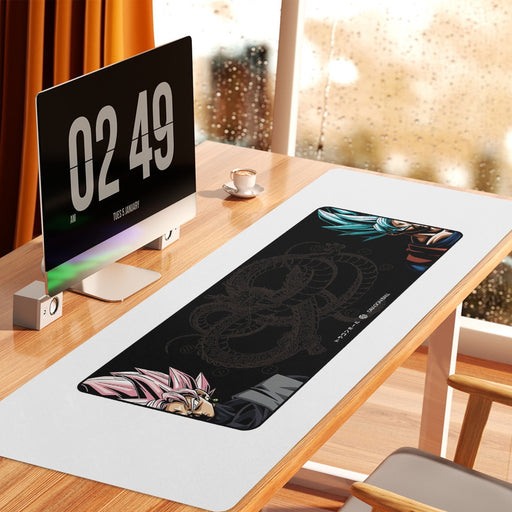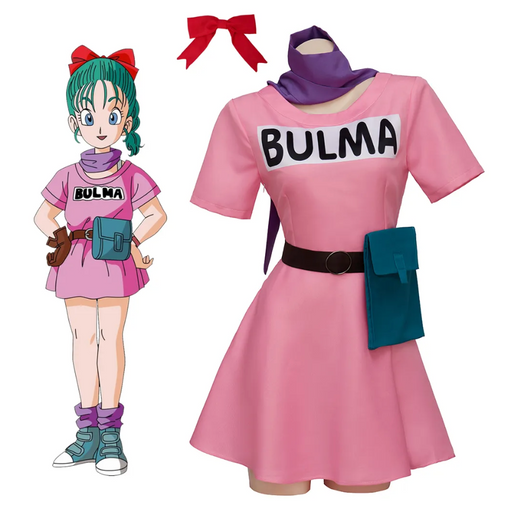
Facts Regarding The Cell Saga You Probably Didn't Know
Facts Regarding The Cell Saga You Probably Didn't Know
When the Frieza arc ends, Goku becomes a SS and defeats the tyrant before destroying planet Namek. Most thought the series wouldn't get any better, and it reached its best moment with this battle. But they didn't know the Frieza arc wasn't the real culmination of this series. Because that honor goes to the Android and Cell saga. It had the best villains in the anime, and what's better, it introduces us to Trunks from the future and marks the start of Vegeta's journey to becoming a hero.
The best point of this saga is when Gohan unleashes his new Saiyan form at ten. Then, he completely defeats Cell in one fell swoop, dealing a fatal blow to both father and son with Kamehameha. It's easy to see why fans love the Android/Cell saga, as it gave us the best additions to the franchise. Since this saga is so popular, we decided to show you some facts about it.
The Villains
Even if they are separate arcs, some fans consider the Android and the Cell arc to be parts of the exact one, but we can't blame them. First, the android saga connects with Cell one, and both stories end after the defeat of Cell. The other reason people consider them from the same arc is that there's a shift in focus. It goes from the different Androids to this new villain, all due to Akira Toriyama's editor.
Originally, Androids 20 and 19 were supposed to be the ones that Trunks returns to warn the Z-warriors about. The thing is, Toriyama's editor felt that they weren't intriguing villains. Because of that, Toriyama introduced the 17th and 18th androids, but they still weren't interesting enough. In the end, Toriyama presented Cell, and his publisher was happy.
Making perfection
While editor Akira Toriyama was glad to see an impressive villain take on the role of the antagonist in the android saga, he didn't like the original proposal. Even after changing the story and villains, editor Toriyama wasn't happy and wanted to see a different version of Cell. So Toriyama figured out a way to recast himself and created another version of Cell, called semi-perfect Cell.
Again, his publisher didn't like it, so he introduced a different shape and design, resulting in the perfect version of Cell. After all these changes and updates, the villain was finally released, satisfying Toriyama and his publisher.
Terminator-inspired
Maybe you didn't know this, but the Dragon Ball series was inspired by Journey West. Similarly, Dragon Ball Z was inspired by American movies. For example, The Saiyan saga is very similar to the story of Superman and the Kryptonian heritage. In a way, it's easy to see that Terminator was Toriyama's inspiration for the Android saga.
The Terminator uses time travel to avoid machines from destroying a bleak future - pretty much the same plot as the Android saga. Trunks travel back in time (he meets his mom in the past) to alert the Z-warriors to destroy the androids.
New Super Saiyans
Many concepts were introduced during the Androids, and the Cell saga involved super Saiyans. First, we see Future Trunks as the second SS in the series, and his transformation was used for the first time in the Vegeta and Gohan saga. Additionally, in the Android and Cell saga, we were introduced to new variations of the SS form.
First, the second phase of Super Saiyan was introduced, which increases the Super Saiyan's strength by strengthening his muscles with Ki. In this, he goes further into the third phase of Super Saiyan, which according to Trunks, causes a decrease in speed due to the increase in muscle mass. Gohan and Goku fully mastered Super Saiyan's transformations in the Hyperbolic Time Chamber, achieving full Super Saiyan strength. Gohan finally accomplished SS2 in his battle with Cell.
Vegeta's change
Vegeta is a popular character because he goes through a crazy evolution: first, he was a terrible villain, and eventually, he became a loving father and husband. While he was some kind of ally in the Frieza saga, Vegeta first changed in the Android and Cell sagas. In this saga, Vegeta transforms from villain to anti-hero and becomes the hero he is in the Buu arc.
One of the reasons Vegeta begins to change is his partnership with Bulma, who is also introduced in that saga. Vegeta, of course, only had a one-time relationship with Bulma and didn't care for his son at first. Even so, he obviously cared for her, and his love eventually was strong enough to overcome his stubbornness. We love you, Vegeta with a badman pink shirt!
Vegeta's vow
Another essential aspect of Vegeta's character growth was his pride. Vegeta's pride has been wounded many times, but nothing hurts more than losing to Gohan Cell. In addition to Goku defeating him multiple times and dying a heroic death (never to meet him again), kid Gohan, only ten years old, outdid him even more, reaching SS2 form. Both were a massive blow to Vegeta's pride, who felt like a shadow of what he used to be.
After that blow to his dignity as a fighter and Saiyan, Vegeta vowed never to fight again. The reasoning behind this was that he couldn't consider himself a warrior after that type of defeat. After the oath, Vegeta kept this training but stopped fighting for about seven years.
Flashbacks becoming canon
Although they were eventually included in the series canon, the flashbacks showing Gohan and Trunks from the future fighting androids were filler and not considered canon because they did not appear in the original manga. Still, some fans believe it's canon.
The story featured in this filler eventually became a television special called "The History of Trunks". The special episode introduced what happened in the flashbacks. They also show Gohan losing his arm, gaining scars, and dying at the hands of droids, with his death being the catalyst for the first transformation of the super Saiyan Trunks.
The energy clash
Cell and Gohan are in battle. In the last moments, both Cell and Gohan fired Kamehameha attacks at each other, and their attacks were met with the energy control attacks that characterized the series.
What is so great about this confrontation? It's actually the biggest in the series. In the climactic battle, Gohan and Cell attack each other. Gohan tries to stop Cell's beam, turning the fight into a war to see who has more power. Luckily, Gohan gets help from his father's spirit and defeats the evil.
Driver's license
While fans are divided on the Dragon Ball filler, we can agree that that one episode where Piccolo and Goku get their driver's license is a funny one. In that episode, Goku talks about how he and his friend get their licenses and fail because they start running.
You will learn something interesting about this filler: the story takes place in the Cell saga.
Alternative universes
The android saga introduced future Trunks and time travel into the Dragon Ball world. Trunks uses a time machine built by his mother. Unfortunately, not everything goes as planned, as Trunks' interference in the past causes discrepancies in the timelines.
The Cell saga presents three central timelines: the main one and two alternative versions. The first one, where Future Trunks arrives from an alternative timeline where Goku dies of a virus and androids kill the remaining Z-fighters. The main timeline prevents this with future Trunks. The last timeline is where Cell kills Trunks and steals a time machine.
Gohan being the main character
After years of having Goku in the lead role, Akira was ready to give the baton to Gohan, Goku's son. Fan backlash has reversed this decision, but plans for Gohan's takeover had been in the works since the Cell saga, and by all accounts, it's clear that Akira had been planning this for some time.
One of the first clues is Goku training with his father. Another clue is that Gohan became a SS at a very young age, which shows that he is strong as Goku. The third clue is when Goku literally gives up his battle with Cell and leaves Gohan to take his place.
Dub's correction
Cell can recover from any injury, which he proudly explains. We first encounter this ability when Goku hits Kamehameha at close range and rips his head off. Cell recovers, however, and continues to fight. If that wasn't enough, he uses that ability twice more, when Gohan punches a hole in his side and when he blows himself up and regenerates from the shot.
In the Japanese version, Cell explains that his regeneration ability comes from a part of his head that allows him to regenerate whatever the reason. However, this is a continuity error, as Cell has previously been restored after his head was shot off. This error is corrected in the English version, where Cell explains that each one of his cells has memory. They allow him to regenerate and restore his body.
Best Sellers
Dragon Ball Z - Vegeta Badman Shirt
Vegeta the Prince of Saiyans wearing a pink shirt? How is it possible? Bulma is really cheeky! Anyway, unlike a combat outfit, this Vegeta Badman S...
View full detailsSleek Goku Mousepad Dragon Ball Z
About Elevate your gaming or work setup with the "Sleek Goku Mousepad Dragon Ball Z." This stylish mousepad features a captivating design showcas...
View full detailsDragon Ball Z Hot Anime Art Silk Poster Canvas Print
About Transform your space into an epic battleground with the "Dragon Ball Z Hot Anime Art Silk Poster Canvas Print." This stunning artwork capture...
View full detailsDragon Ball Super Caulifla Super Saiyan 2 Epic Casual Four-piece Bathroom
Introducing the Dragon Ball Super Caulifla Super Saiyan 2 Epic Casual Four-piece Bathroom Set – a fusion of style and Saiyan strength for your bath...
View full detailsBulma Dress: Your Versatile Wardrobe Game-Changer
Embark on an adventure of style and comfort with our Bulma Dress – the ultimate everyday casual wear that effortlessly transforms into the most cre...
View full details








